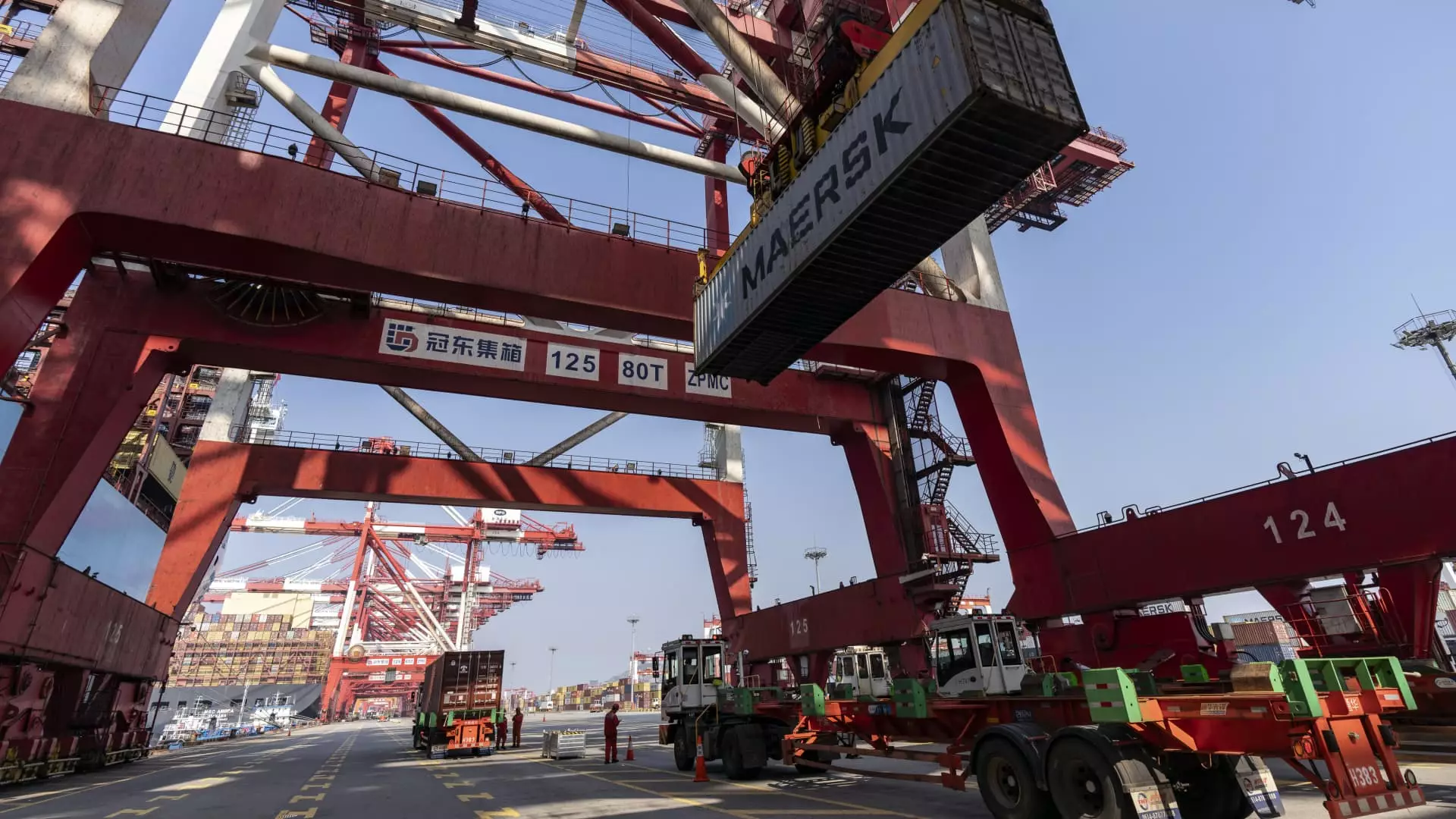China’s economic fabric is woven with the intricate threads of international trade, and recent customs data for September reveals an unsettling reality: both exports and imports fell short of market expectations. The figures, released earlier this week, painted a cautious picture of an economy that has long relied on trade as a cornerstone of its growth strategy. While exports witnessed a muted 2.4% increase compared to the same month last year, imports barely edged up by 0.3%. These outcomes contrast sharply with economists’ predictions, which had projected a 6% growth in exports and a more robust 0.9% rise in imports, according to a Reuters poll.
For years, China’s export sector has served as a pillar of the nation’s economic progress. This reliance has grown even more pronounced as domestic issues—such as sluggish consumer spending and a deteriorating real estate market—have started to dampen growth prospects. As highlighted by Zhiwei Zhang, president and chief economist at Pinpoint Asset Management, the increasing friction in trade relations with the United States and the European Union complicates the trajectory for China’s exports heading into the new year.
This trade tension is underscored by the implementation of tariffs on a widening array of products, including electric vehicles. The U.S., being China’s largest trading partner, saw Chinese exports grow by just 2.2%, although imports from the U.S. increased by a more promising 6.7%. Such fluctuations highlight the complexities and potential volatility within international trade dynamics as varying governmental policies continue to shape economic output.
One glimmer of hope within this mixed trade landscape is the possibility of enhanced fiscal spending. Zichun Huang, an economist at Capital Economics, notes that though import volumes saw a dip, there are signs of a potential rebound spurred by accelerated fiscal initiatives aimed at stimulating demand for industrial commodities. China’s Ministry of Finance hinted at a larger fiscal deficit—a decision that could act as a catalyst for constructive economic activities, particularly in construction, over the next few quarters.
As the global economy underwent shifts, Chinese exports to the Association of Southeast Asian Nations—its primary regional trading partner—rose by 5.5%, accompanied by a 4.2% increase in imports. Meanwhile, exports to the European Union increased minimally by 1.3%, whereas imports faced a decline of 4%. Such regional dynamics illustrate that while some markets remain viable, others are increasingly challenged by geopolitical factors.
Diving deeper into the sectoral performance of Chinese exports reveals a mixed outcome, with some categories thriving while others languish. For instance, shipments of automobiles showed a significant annual increase of 25.7%, yet products such as footwear, toys, and smartphones stumbled. In contrast, export growth was observed in home appliances and integrated circuits, reinforcing a nuanced view of the export sector that highlights both resilience and vulnerability.
Conversely, the declining appetite among consumers for certain items reflects persistently muted domestic demand, as seen in the 10.7% drop in crude oil imports compared to last year. In a bid to ensure national food security, Beijing has ramped up soybean imports significantly, suggesting a strategic pivot in response to global economic pressures.
The broader implications of these trade patterns paint a concerning picture of the Chinese economy. With the consumer price index remaining subdued—rising by only 0.1% year-on-year in September, marking the slowest growth since early 2021—there are growing fears of prolonged economic malaise. Additionally, seasonal factors, such as the recent Mid-Autumn Festival and the Golden Week, failed to invigorate tourism and related sectors.
As the National Bureau of Statistics prepares to release third-quarter GDP figures, coupled with vital statistics on retail sales and industrial production, the data will serve as a critical barometer for gauging the underlying health of the economy. Despite the Chinese government’s recent attempts to pump stimulus into the economy, stakeholders remain wary, with many eyeing promised fiscal policy measures that have yet to materialize in tangible ways.
As China grapples with the dual challenges of external trade pressures and internal economic sluggishness, the latest economic indicators underscore the urgent need for strategic policy interventions. The interplay of boosted fiscal spending, evolving trade relationships, and shifting consumer demands will be pivotal in determining the future trajectory of China’s economy. Investors and analysts will be closely watching the upcoming economic data for signs of recovery or further distress, setting the stage for decisive actions in the coming months.

